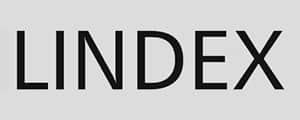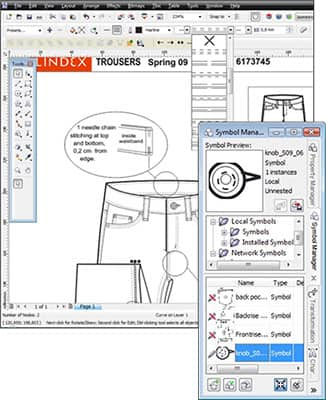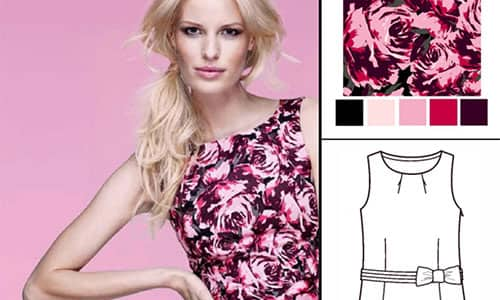
-
CUSTOMER
Anethe Olofsson, LINDEX -
LOCATION
Gothenburg, Sweden -
INDUSTRY
Clothing industry -
PRODUCT
CorelDRAW Graphics Suite (includes Corel DESIGNER)
With its new collection of spring dresses flying out of its stores, Swedish fashion chain Lindex has managed to persuade women who are diehard jeans-wearers to reach for their wallets. Anethe Olofsson, garment technician manager, isn’t at all surprised. “That’s what Lindex has been good at for over 50 years,” she says. “We detect a trend just as it’s emerging, then turn it into versatile clothes that are both original and very wearable – as quickly as possible.”
Expansion in a tough market
The strategy is paying off. The competition between fashion retailers has always been strong, but is much fiercer in the current economy, as consumers are much more careful with their spending these days. Yet Lindex is doing very well indeed. With 2008 revenues of 672 million, almost 5000 staff and 375 stores, the company is one of northern Europe’s leading fashion brands. Along with its geographical expansion into the Baltic countries, the Czech Republic, Russia and the Middle East, Lindex has successfully diversified its product range, which now includes lingerie, children’s clothes and cosmetics as well as women’s fashion. It also operates purchasing offices in China, Hong Kong, Bangladesh, India, Turkey and Pakistan.
As with any other consumer-led business where originality plays a big role, reducing time-to-market is crucial to success. This is especially true for Lindex with design, manufacturing and supply chain operations distributed around the world. “When one of our designers has come up with a great new idea, they need to produce a detailed computer sketch of the garment as quickly as possible,” explains Anethe Olofsson. “We work on some trends well in advance, but with others we may only have a few weeks between the idea and displaying the clothes in our stores.”
The detail makes the difference
This is where Corel DESIGNER comes in. The designer uses it to produce a rough sketch of the garment shape, then works with garment technicians and others to specify a wealth of different details. These may include the positioning of buttons, pockets, logos and other trimmings. Lindex has customized Corel DESIGNER by adding its special stitch types, making it easy for designers to ensure the right stitching is specified. Garment technicians also work with the solution to produce size charts and specify measurements for each type of article. Next, a few samples of the garment are made in a range of sizes and tested on real people to see how they look. “That’s the fun part,” says Anethe Olofsson. “We sometimes ask staff of different ages, shapes and sizes to try on the samples. The feedback is really valuable and our designers and technicians can quickly make any adjustments necessary on-screen with Corel DESIGNER.” Once the designers, garment technicians and pattern experts are satisfied with all aspects of the design, the specifications are sent to the Lindex production sites for manufacturing.
“Easy to learn, easy to use, cost-effective”
As Corel DESIGNER is networked throughout the organization, designers and garment technicians in different locations can work with the same data. The solution has also been integrated with the company’s product data management (PDM) system to combine information from the design, pattern measurement and production teams. With her broad background encompassing fashion design, pattern production, manufacturing, quality control, and purchasing, Anethe Olofsson is an ideal point of reference for feedback between a number of different teams. She is also tasked with regular checks on whether designers and others have all the tools they need. “Whenever I ask them if they’re still happy with Corel DESIGNER, they tell me the product works really well – it’s easy to learn, easy to use and cost-effective. We’ve been using it for seventeen years now!”
“We've been impressed with Corel service and support – they're always keen to help. And the product itself is very cost-effective.”
Lindex started out using Micrografx Designer in 1992 and has remained loyal to the solution through all its new releases and upgrades, especially after it was acquired by Corel in 2001. “We’re using the newest version now,” notes Anethe Olofsson. “We’ve been impressed with Corel service and support since the acquisition they’re always keen to help. And the product itself is very cost-effective.” One reason for this is that the Corel DESIGNER Technical Suite X4 [now CorelDRAW Technical Suite] is built on top of CorelDRAW, leveraging its existing design capabilities. The integration of CorelDRAW’s creative drawing tools, special effects, and color management with the precise technical graphics functions of Corel DESIGNER makes the design process smoother. On top of this, Lindex has configured the product to suit its own specific requirements, thanks to the flexibility of Corel DESIGNER.
Future plans

Because font programs can take up a significant amount of disk space on a PC, Lindex stores them on a server. The company is working with Corel to enable designers to access the font they require via the Corel DESIGNER user interface. In addition, Lindex is planning to standardize colors to ensure absolute color precision between Corel DESIGNER and other applications. This will make it easier to share garment specifications between several systems, especially as Corel DESIGNER supports the import and export of multiple file formats. And Anethe Olofsson has plans of her own. “There’s a dress in our new spring collection that I really like – but it keeps selling out in all our stores. I’m going to sneak a look at our delivery schedules and then rush out and buy it!”
